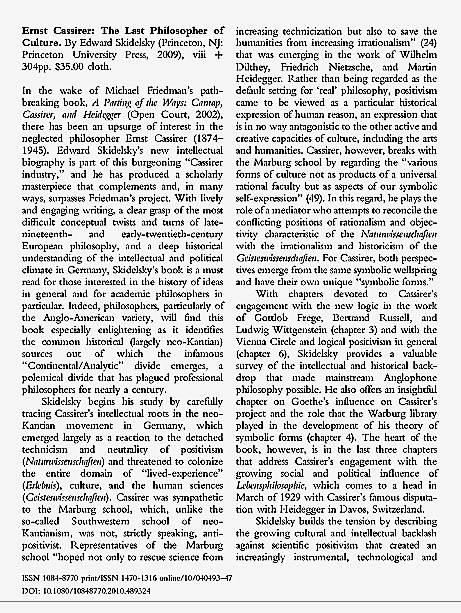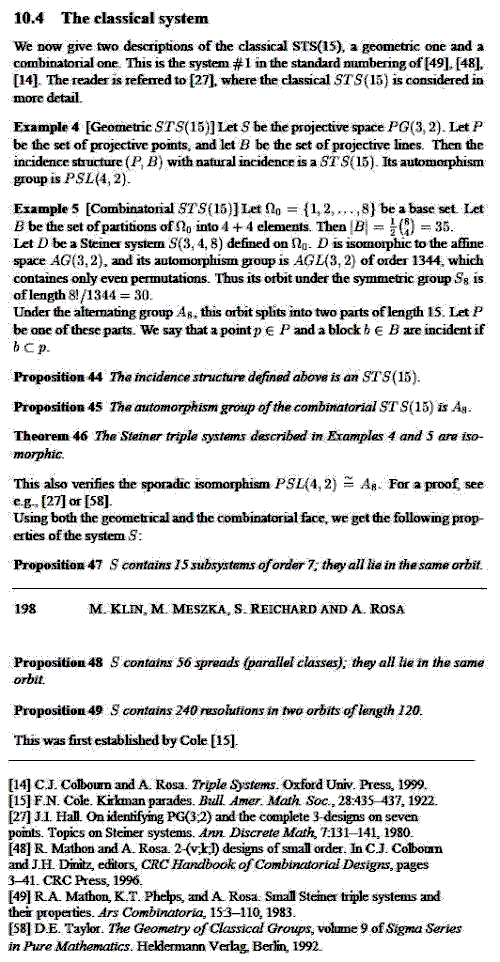
Tuesday, November 5, 2024
Minding the Gap: A Surrealist’s Dies Natalis
Friday, October 25, 2024
Thursday, August 15, 2024
Dies Natalis
A search in this journal for "Wallace Stevens died" is
suggested by a New York Times obituary this afternoon . . .

Sunday, March 17, 2024
The Livingstone Dies Natalis
The above Livingstone obituary is dated January 29, 2024.
See as well that date in this journal, and some remarks
by Bernd Witte on Walter Benjamin, science, language, and religion.
Wednesday, January 31, 2024
Dies Natalis
The New York Times reports the death yesterday, January 30, 2024,
of the wife of Beach Boys co-founder Brian Wilson.
According to the Catholic Church, therefore, yesterday was her
dies natalis — day of birth into heaven.
According to the Times, her secular dies natalis was Oct. 3 (10/03) —
"Melinda Kae Ledbetter was born on Oct. 3, 1946, in Pueblo, Colo."
According to this journal, yesterday's significant "10 03" was a time —
Fans of hallucinatory fiction might recall a saying of Philip Pullman:
"The meaning of a story emerges in the meeting
between the words on the page
and the thoughts in the reader's mind.
So when people ask me what I meant by this story,
or what was the message I was trying to convey in that one,
I have to explain that I'm not going to explain.
Anyway, I'm not in the message business;
I'm in the 'Once upon a time' business."
Words that are somewhat less hallucinatory —

Tuesday, July 4, 2023
Dies Natalis
June 27, 2016, in YouTube and in life —

Today's date, July 4, was also, in 1826, the dies natalis of
former U.S. presidents Thomas Jefferson and John Adams.
Saturday, May 27, 2023
Dies Natalis
Saturday, December 31, 2022
Dies Natalis: The Frame
Friday, April 22, 2022
Dies Natalis
October 2, 2016, was, in the Catholic sense, the dies natalis
of a philosopher of science, Mary Hesse.
October 2 was also the day of birth, in the non-Catholic sense,
of philosopher-poet Wallace Stevens.
Cf. remarks in this journal on October 2, 2016.
Wednesday, December 26, 2018
Tuesday, November 19, 2024
Baptismal Font: Times New Roman
Click the Dies Natalis metadata for supplemental reading.
Thursday, October 24, 2024
Space Vesper: “Shaken, Not Stirred”
A Tuesday dies natalis —

From the Log24 post "Verbum" (Saturday, February 18, 2017).
A different Tuesday —
Tuesday Weld in the 1972 film of Didion's Play It As It Lays :
Note the making of a matching pattern.
Saturday, October 19, 2024
“Must be the season . . . .” — Song lyric
Wednesday, September 11, 2024
Quiet Flows

And then there is another quiet flow . . .


A rumored work in progress from East Berlin . . .
Softly Flows the Conewago
by East Berlin author Nancy Springer
Also by Springer —
“They are the horses of a dream.
They are not what they seem.”
— The Hex Witch of Seldom, page 16
See as well a dies natalis — January 6, 2016 —
that shares an Epiphany with the Guardian's
"Nobel losers" article . . .
Friday, August 30, 2024
Dimensions
From August 17 —
Also from August 17, a dies natalis —
I prefer the "three D's" of Debbie Does Dallas.
Thursday, August 29, 2024
The Coal Mining Daughters
Tag suggested by the previous post and by the dies natalis
in a New York Times obituary from today —
Kesey Benchmarks . . .

Tuesday, August 27, 2024
“Accomplished in Steps”
"It's going to be accomplished in steps,
this establishment of the Talented
in the scheme of things."
— To Ride Pegasus ,
by Anne McCaffrey* (Radcliffe '47)
An AI image created on Feb. 24, 2024, by https://neural.love —
"Lily Collins Playing Chess" —


* Dies Natalis: November 21, 2011.
Thursday, August 1, 2024
Web Surfing Notes

The above search was suggested by a Google Doodle result . . .

For those who prefer the Society of Jesus to the Surf Club . . .
https://www.americamagazine.org/politics-society/
2024/07/29/olympics-last-supper-ceremony-248467
. . . and, from the dies natalis of Junie Schenck . . .
Sunday, February 11, 2024
Dasein für McConnachie
Twelfth Night 2024 was the dies natalis of
comedy writer Brian McConnachie.
From this journal on that date —
Funeral scene from "Being There" (1979)
Thursday, January 18, 2024
Friday, December 22, 2023
Wiki’d
Lewis Carroll's chess Red Queen, from Through the Looking Glass,
is "often confused with" the playing cards Queen of Hearts,
from Alice in Wonderland —
" The King turned pale, and shut his notebook hastily.
'Consider your verdict,' he said to the jury in a low, trembling voice….
. . . . 'No, no!' said the Queen. 'Sentence first—verdict afterward.' "
— Lewis Carroll, Alice in Wonderland
|
The figure at right in the video of today's previous post,
"In Alice in Wonderland , the Red Queen
— College of Natural Resources commencement address,
Berck's address was titled "The Red Queen." |
Berck's dies natalis — "birth into heaven," in Catholic parlance —
was reportedly August 10, 2018. A Log24 synchronology check
yields a different chess-related figure … Actor/director John Huston:
Sunday, July 9, 2023
This Is Your Brain on Category Theory
Remarks by John Baez today suggest a flashback…
Thursday, June 8, 2023
“On the Route” Continues: Newman Sauce
https://www.nytimes.com/2023/06/08/movies/
barry-newman-dead.html
An Actor Prepares . . .
See the previous post.

See also the film "Vanishing Point" discussed
in the above New York Times obituary.
Barry Newman's dies natalis is reportedly May 11.
See "On the Route" from that date in this journal.
An Artist’s Legacy
A check of today's New Yorker penbots yields
an entertaining piece on pop culture by Sarah Larson:
Perhaps, in death's dream kingdom, there is some guidance from
the illustrator who reportedly did the book cover in the previous post —
one Hector Garrido.
"Operation Childlike Innocence, Phase One."
— Sarah Larson, quoted here on Sept. 5, 2015.
Garrido's dies natalis was reportedly 19 April, 2020.
Synchronology check — Log24 search: "Wittgenstein Easter."
Wednesday, June 7, 2023
Exploring Color Space . . . Continues.

"Another story" —
See also Sontag's own account of the Mann meeting.
Related material —

It would seem that Moser is deeply confused about two different
meetings of Sontag with Mann — discussing Doctor Faustus
in 1947, and, later, as a U. of Chicago student, discussing
The Magic Mountain with Mann in 1949 on the Feast of the
Holy Innocents — coincidentally, also the date of her dies natalis
(in the Catholic sense) in 2004.
Tuesday, May 30, 2023
Seal 7 . . .
See John Baez this morning on Galois. Note that Baez's
report of Galois's dies natalis is in error.
Tuesday, May 16, 2023
The Cassirer in the Rye
From the American Mathematical Society today —
Robert Earl Tubbs (1954-2023)
May 15, 2023
"Tubbs, associate professor of mathematics at
the University of Colorado Boulder, died April 11, 2023,
at the age of 69. He received his PhD in 1981 from
Penn State University under the supervision of
W. Dale Brownawell. His research interests included
number theory, especially transcendental number theory,
the intellectual history of mathematical ideas and mathematics,
and the humanities."
This journal on the dies natalis of Tubbs had the third of three
posts tagged "Space and Form." Those posts dealt with European
cultural history related to Tubbs's interests. The "Space and Form"
posts, along with today's previous Log24 post, suggest a review of
the Nov. 10, 2021 post titled European Culture. An image from that post —
Those who share Cassirer's enthusiasm for myth may regard the
above Josefine Lyche version of my work as a sort of "secret writing,"
to quote a phrase of Cassirer's I find very distasteful. But there is nothing
secret about it, although there is some resemblance to written characters.
This post's title was suggested by a Salinger quote in the European Culture post.

Update on the next day, May 17 —
Further reading in Cassirer's Mythical Thought indicates that in the
passages above, on Schelling, he may be presenting a parody of
Schelling when he writes "a poem hidden behind a wonderful
secret writing." Later, on page 10, he asks, sensibly,
"… is there, perhaps, a means of retaining the question
put forward by Schelling's Philosophie der Mythologie
but of transferring it from the sphere of a philosophy of
the absolute to that of critical philosophy?"
There has reportedly been "an upsurge of interest" in Cassirer —
Sunday, May 7, 2023
New Queen
This post is in memory of Adam Brace, a British comedy director.
His dies natalis is reported to be April 29, 2023.
See also Dramarama and, from the above story's date . . .
Saturday, May 6, 2023
The Chico Hallows
The above illustration is from Log24 on the dies natalis —
day of birth into heaven, in the Catholic tradition —
of Grace C. Hertlein, a sort of patron saint of computer art
from Chico, California, who reportedly died at 91 in 2015.
It supplies the parts missing from a J. K. Rowling design…
See Cinco de Mayo , 2011.
Friday, May 5, 2023
For St. Corky Lee
Today's Google Doodle honors a Chinese-American photographer
who reportedly died on January 27, 2021.
From his dies natalis (birth into heaven, in the Catholic tradition) —
See as well some background on a Chinese-related cube.
Saturday, April 1, 2023
For this weekend’s Bombay Beach Biennale
Tuesday, March 28, 2023
Industrial Heyday*
↑ "Story continues below advertisement" . . .
What if the story is the advertisement?
This journal on the above dies natalis :
* See also the previous post, "Language Drill."
Thursday, February 2, 2023
The Menand Lede
"When the Washington Post unveiled the slogan
'Democracy Dies in Darkness,' on February 17, 2017,
people in the news business made fun of it.
'Sounds like the next Batman movie,' the New York Times’
executive editor, Dean Baquet, said."
— Louis Menand in The New Yorker ,
"When Americans Lost Faith in the News," Jan. 30, 2023.
See also Darkness in this journal.
Not so dark:
A Log24 post from February 17, 2017
regarding that year's Groundhog Day — The dies natalis
(in the Catholic sense) of St. Bertram Kostant.
Wednesday, December 14, 2022
Miles to Go
See also a Log24 post from Dec. 5, the lawyer's dies natalis.
Saturday, November 5, 2022
Under the Bridge, Over the Dam … Whatever.
Bridge


Dam
April 11, 2020, was the dies natalis ,
in the Catholic sense,
of John Horton Conway.
Whatever.
Wednesday, May 18, 2022
Sounds of Music: Compare and Contrast
The New York Times this afternoon —
From Log24 on the Catholic dies natalis of
the von Trapp daughter above —
Tuesday, April 19, 2022
Hat Tip to Andrew Cusack
For a weblog post today on an auction item from
the collection of the late Pierre Le-Tan.
A search for information on Le-Tan reveals that his
dies natalis (in the Catholic sense) was Sept. 17, 2019.
See a poem quoted here on that date in posts tagged Quark Rock.
Friday, August 20, 2021
Diamond Brackets*
For more on the phrase "diamond brackets," see the post
Artistic Style of July 24, 2018.
This was the dies natalis (in the Catholic sense) of philosophy
professor Garth L. Kemerling.
From Kemerling's internet "Philosophy Pages" —
"First, it must be possible in principle to arrange and organize
the chaos of our many individual sensory images by tracing
the connections that hold among them. This Kant called
the synthetic unity of the sensory manifold.
Second, it must be possible in principle for a single subject
to perform this organization by discovering the connections
among perceived images. This is satisfied by what Kant called
the transcendental unity of apperception."
Related Log24 phrases —
"Intake Manifold" and "Bulk Apperception."
* See also Bracketing (phenomenology) in Wikipedia.
Saturday, June 26, 2021
Annals of Experimental Theology . . .
See as well . . .
April 11, 2020, was the dies natalis ,
in the Catholic sense,
of John Horton Conway.
Tuesday, December 15, 2020
Connection
Hurt’s dies natalis (date of death, in the saints’ sense) was,
it now seems, 25 January 2017, not 27.
A connection, for fantasy fans, between the Philosopher’s Stone
(represented by the eightfold cube) and the Deathly Hallows
(represented by the usual Fano-plane figure) —


Images from a Log24 search for “Holocron.”
Thursday, April 23, 2020
Dead Poet Joke
From the subtitles of the recent Kristen Stewart film “Underwater” —
427
00:30:26,144 –> 00:30:27,476
He’d always say
he had a new joke,
428
00:30:27,478 –> 00:30:29,445
and then he’d tell
the same stupid joke.
429
00:30:29,447 –> 00:30:32,785
I was… laughing at that joke.
430
00:30:34,053 –> 00:30:35,685
Yeah, what was it?
431
00:30:35,687 –> 00:30:38,654
What did the fish say when
it bumped into the brick wall?
April 11 was the dies natalis , in the Catholic sense, of John Horton Conway.
Related material: Other posts containing the phrase “brick wall.”
Wednesday, April 8, 2020
Ironweed Meditation
Andrew Cusack’s post today on architecture in Albany
suggests a review of the 1988 film Ironweed.
The dies natalis (in the Catholic sense) of that film’s
director was reportedly July 13, 2016.
Monday, December 2, 2019
D8: The Black Queen’s Square
The previous post quoted some dialogue from Victor Hugo's
novel about the French Revolution, Ninety-Three.
This suggests a look at the following non-fiction book:

Compare and contrast with the novel The Eight , by Katherine Neville,
about chess and the French Revolution.
Neville's birthday, April 4, plays a major role in her novel. The dies natalis
(in the Roman Catholic sense) of the above Birth of the Chess Queen
author, on the other hand, was reportedly November 20, 2019.
Following a link in this journal from November 20 leads to remarks
that might interest the subjects of an upcoming film, "The Two Popes."

Sunday, November 3, 2019
Sinatra Date
December 14, 2003, was the dies natalis
of actress Jeanne Crain.
Monday, August 12, 2019
Never-Ending Toy Story
" … this beautiful love story . . . ."
An image from the previous post:
The above line "From the producer of Transformers " suggests
a story from March 18, 2019 . . .
Misreading the words of di Bonaventura
yields a phrase that might be applied to
the Church of Rome . . .
"A franchise based on release dates."
See dies natalis in this journal.
For the Church of Synchronology, see
the above di Bonaventura date, March 18.
Then there is the Church of Cubism . . .
"Before time began, there was the Cube."
— Optimus Prime, Transformers , 2007
Sunday, February 17, 2019
For the Schoolgirls of 1959
The dies natalis of St. Buddy Holly was Feb. 3, 1959.
This year on Feb. 3, a geometric illustration of the well-known
schoolgirl problem was added to a brand-new Wikipedia article
on the finite geometry PG(3,2).
Friday, June 29, 2018
For St. Stanley

The phrase "Blue Dream" in the previous post
suggests a Web search for Traumnovelle .
That search yields an interesting weblog post
from 2014 commemorating the 1999 dies natalis
(birth into heaven) of St. Stanley Kubrick.
Related material from March 7, 2014,
in this journal —
That 2014 post was titled "Kummer Varieties." It is now tagged
"Kummerhenge." For some backstory, see other posts so tagged.
Thursday, July 28, 2016
A Mad Day’s Work
Yesterday was the dies natalis , in the Catholic sense,
of the great cartoonist Jack Davis.
From an obituary —
Wednesday, July 13, 2016
Tuesday, July 12, 2016
Hymn
Yesterday was reportedly the dies natalis (in the Catholic sense)
of a former president of New York University.
From the conclusion of The Chronicles of Narnia —
"The term is over: the holidays have begun.
The dream is ended: this is the morning."
Linda Hamilton's related hymn in the 1984 film "Children of the Corn" —
Tuesday, April 8, 2014
Miami Mosaic
He “…believed the art to be real….”
— Lawyer for Mosaic Miami Church pastor
accused of trying to sell forged Damien Hirst art
A Miami mosaic from this journal last Dec. 21—
The indicated link is to…
See also St. Ursula’s Day, 2010, and Emil Artin’s dies natalis in 2003.
Wednesday, March 5, 2014
The Good Earth
Wednesday, January 22, 2014
A Riddle for Davos
Einstein and Thomas Mann, Princeton, 1938
See also the life of Diogenes Allen, a professor at Princeton
Theological Seminary, a life that reportedly ended on the date—
January 13, 2013— of the above Log24 post.
January 13 was also the dies natalis of St. James Joyce.
Some related reflections —

"Praeterit figura huius mundi " — I Corinthians 7:31 —

|
Conclusion of of "The Dead," by James Joyce— The air of the room chilled his shoulders. He stretched himself cautiously along under the sheets and lay down beside his wife. One by one, they were all becoming shades. Better pass boldly into that other world, in the full glory of some passion, than fade and wither dismally with age. He thought of how she who lay beside him had locked in her heart for so many years that image of her lover's eyes when he had told her that he did not wish to live. Generous tears filled Gabriel's eyes. He had never felt like that himself towards any woman, but he knew that such a feeling must be love. The tears gathered more thickly in his eyes and in the partial darkness he imagined he saw the form of a young man standing under a dripping tree. Other forms were near. His soul had approached that region where dwell the vast hosts of the dead. He was conscious of, but could not apprehend, their wayward and flickering existence. His own identity was fading out into a grey impalpable world: the solid world itself, which these dead had one time reared and lived in, was dissolving and dwindling. A few light taps upon the pane made him turn to the window. It had begun to snow again. He watched sleepily the flakes, silver and dark, falling obliquely against the lamplight. The time had come for him to set out on his journey westward. Yes, the newspapers were right: snow was general all over Ireland. It was falling on every part of the dark central plain, on the treeless hills, falling softly upon the Bog of Allen and, farther westward, softly falling into the dark mutinous Shannon waves. It was falling, too, upon every part of the lonely churchyard on the hill where Michael Furey lay buried. It lay thickly drifted on the crooked crosses and headstones, on the spears of the little gate, on the barren thorns. His soul swooned slowly as he heard the snow falling faintly through the universe and faintly falling, like the descent of their last end, upon all the living and the dead. |
Friday, December 20, 2013
For Emil Artin
(On His Dies Natalis )…
This is asserted in an excerpt from…
"The smallest non-rank 3 strongly regular graphs
which satisfy the 4-vertex condition"
by Mikhail Klin, Mariusz Meszka, Sven Reichard, and Alex Rosa,
BAYREUTHER MATHEMATISCHE SCHRIFTEN 73 (2005), 152-212—
(Click for clearer image)
Note that Theorem 46 of Klin et al. describes the role
of the Galois tesseract in the Miracle Octad Generator
of R. T. Curtis (original 1976 version). The tesseract
(a 4×4 array) supplies the geometric part of the above
exceptional geometric-combinatorial isomorphism.
Monday, July 29, 2013
St. Walter’s Day
Today is the dies natalis of group theorist Walter Feit.
"The Steiner systems S (5,6,12) and S (5,8,24) are remarkable combinatorial
configurations unlike any others. Their automorphism groups are the Mathieu
groups M12 and M24. These are the only 5-transitive permutation groups other
than symmetric and alternating groups: (a fact long conjectured but only
proved as a consequence of the classification). The Leech lattice is a blown up
version of S (5,8,24). It is the unique even unimodular lattice in 24 dimensions
with no vectors of weight 2. This uniqueness is an essential reason why it is a
geometric object of fundamental importance. The automorphism group Co.O
of the Leech lattice involves about half of the sporadic groups and generally it
is felt that these are well understood."
— Walter Feit, book review, Bulletin of the American Mathematical Society ,
Vol. 8 (1983), 120-124, page 123
Saturday, June 8, 2013
Multispeech (continued)
For this, the dies natalis of poet Gerard Manley Hopkins,
it seems apt to cite a 1973 master's thesis on what the author
calls multiguity in Hopkins.
See also multispeech in this journal.
Related material:
- Hopkins and tic-tac-toe in the above thesis, p. 20.
- Gail Collins's column today
- TIC
- tacto
See, too, the online front page of The New York Times
from 1:54 PM ET today, and, as an example of multispeech,
yesterday morning's post Rubric's Cuber.
Yesterday's noon post concerned a forthcoming novel
about poetry and intelligence services. Some related backstory:
Wednesday, May 1, 2013
For Law Day
Harvard Gazette , March 4th, 2013:
"Winfrey will speak on May 30 during Commencement day’s
Afternoon Exercises, which serve as the annual meeting of
the Harvard Alumni Association. The exercises will take place
in the Tercentenary Theatre of Harvard Yard,
between Memorial Church and Widener Library."
On the 1977 Octavia Butler novel Mind of My Mind :
"The first chapter in a history that Butler has already taken up
at a much later stage in Patternmaster (1976).
Mind of My Mind begins with Doro, a ruthless mutant
as old as the pyramids who has spent the last 4,000 years
trying to breed a race in his own image. The culminating
experiment is his daughter Mary. But, to Doro's astonishment,
Mary's first instinct on attaining her full powers is to begin
building a mental community— a Pattern— out of the
wretched thousands of Doro's half-telepathic failures
and partial successes. Despite some ragged moments,
Butler is clearly on to a promising vein— something like
Zenna Henderson's 'People' stories without their
saccharine silliness. There's a lot of intrinsic energy in the
Pattern idea, and one wants to see where this erratic, gifted
storyteller will pick it up next."
— Kirkus Reviews , Vol. XLV, No. 8 (1977), p. 453.
See this journal on Butler's dies natalis , the feast of St. Matthias, 2006.
Those who prefer Eastern approaches to religion may consult
Robert Thurman and his daughter Uma.
"Oprah, Uma. Uma, Oprah." — David Letterman
Wednesday, December 7, 2011
Eight is a Gate*
For Saint Irving
* For one interpretation of this phrase, see
Sicilian Reflections (from this year's Feast
of St. Irving Berlin on his dies natalis ).
Tuesday, August 23, 2011
Four Winds

Related remarks —
- Sunday's Log24 post Cuatro Vientos on Jack Kerouac
- The phrase dies natalis in Log24
-
Another weblog in 2004 on the dies natalis of Jack Kerouac.
That weblog gives the dies as Oct. 20, but other sources
say Kerouac died at 5:15 AM on Oct. 21. - A Log24 post on Oct. 20 last year related to the Oct. 21 date.
For the eight-limbed star at the top of the quaternion array above,
see "Damnation Morning" in this journal—
She drew from her handbag a pale grey gleaming implement that looked by quick turns to me like a knife, a gun, a slim sceptre, and a delicate branding iron—especially when its tip sprouted an eight-limbed star of silver wire. “The test?” I faltered, staring at the thing. “Yes, to determine whether you can live in the fourth dimension or only die in it.” — Fritz Leiber, short story, 1959
See also Feb. 19, 2011.
Sunday, August 21, 2011
Relativistic Truth
Today's online New York Times on the conclusion of the Roman Catholic Church's "World Youth" week—
"At the end of Sunday’s Mass, the pope announced that the next such event would be in Rio de Janeiro in 2013. Until then, he told those at the service, in Portuguese, that they 'will be swimming against the tide in a society with a relativistic culture, which wishes neither to seek nor hold on to the truth.'*"
* Fact check— This agrees with the Vatican Radio version.
Related material: Relativity Blues and Portal to 1937…

The "Portal" link above is in honor of the May 2 dies natalis of Salomon Bochner (pdf).
For some background, see yesterday's Castles in the Air and Bochner in this journal.
Saturday, April 16, 2011
Birthdays
For Pope Benedict XVI and the late Al Sears
Today is the Pope's birthday. Another date of interest—
Al Sears, composer of "Castle Rock," is said to have died at 80 on March 23, 1990. If Sears were a saint, March 23 would be his saint's day— his dies natalis (day of birth into heaven).
For Al—
This morning's post linked to a picture of Alicia Keys's hands at a piano keyboard. Some background from March 23 this year— "Well, she was just 17" and The Heroic Finger.
For the Pope—
Click, as the instructions say,
to look inside.
Tuesday, September 28, 2010
Brightness at Noon (continued)
Happy birthday to Mira Sorvino (Harvard '89).
Related material: June 9 and June 10, 2008.
A more dramatic presentation, also done on June 9-10, 2008—
Alicia Keys, "Superwoman" video.
Happy dies natalis to Miles Davis—
"… nothing ever truly dies. The universe wastes nothing. Everything is simply… transformed."
— Keanu Reeves in the 2008 "Day the Earth Stood Still." (See today's 11:07 AM entry.)
Friday, September 17, 2010
Fade to Blacker
From Peter J. Cameron's web journal today—
|
… Eliot’s Four Quartets has been one of my favourite works of poetry since I was a student…. Of course, a poem doesn’t have a single meaning, especially one as long and complex as Four Quartets. But to me the primary meaning of the poem is about the relationship between time and eternity, which is something maybe of interest to mathematicians as well as to mystics. Curiously, the clearest explanation of what Eliot is saying that I have found is in a completely different work, Pilgrimage of Dreams by the artist Thetis Blacker, in which she describes a series of dreams she had which stood out as being completely different from the confusion of normal dreaming. In one of these dreams, “Mr Goad and the Cathedral”, we find the statements
and
In other words, eternity is not the same as infinity; it is not the time line stretched out to infinity. Rather, it is an intimation of a different dimension, which we obtain only because we are aware of the point at which that dimension intersects the familiar dimension of time. In a recurring motif in the second Quartet, “East Coker”, Eliot says,
and, in “Little Gidding”,
|
From this journal on the date of Blacker's death—
what would, if she were a Catholic saint, be called her dies natalis—
Monday December 18, 2006
|
Friday, August 13, 2010
The Most Toys*
"He who dies with the most toys, wins." –Folk saying
Happy dies natalis to Jack Ryan.
See also "Space Cowboy."
* Cf. the Wikipedia article with this title—
An evil art collector steals Data from the Enterprise.
Alternate title for this post: "A Girlfriend for Data." Some background—

Thursday, August 5, 2010
Eightgate
"Eight is a gate."
— This journal, December 2002
Tralfamadorian Structure
in Slaughterhouse-Five
includes the following passage:
“…the nonlinear characterization of Billy Pilgrim
emphasizes that he is not simply an established
identity who undergoes a series of changes but
all the different things he is at different times.”

This suggests that the above structure be viewed
as illustrating not eight parts but rather
8! = 40,320 parts.
See also April 2, 2003.
Happy birthday to John Huston and
happy dies natalis to Richard Burton.
Wednesday, March 17, 2010
Prime Directive
Rigor
“317 is a prime, not because we think so,
or because our minds are shaped in one way
rather than another, but because it is so,
because mathematical reality is built that way.”
– G. H. Hardy,
A Mathematician’s Apology

The above photo is taken from
a post in this journal dated
March 10, 2010.
This was, as the Pope might say,
the dies natalis of a master gameplayer–
| New York Times, March 16, 2010–
Tim Holland, Backgammon Master, Tim Holland, who was widely considered the world’s greatest backgammon player during that ancient board game’s modern heyday, in the 1960s and ’70s, died on March 10 at his home in West Palm Beach, Fla. He was 79. <<more>> |
In Holland's honor, a post
from Columbus Day, 2004—
Tuesday October 12, 200411:11 PM Time and Chance
Today’s winning lottery numbers
|
A quote from Holland on backgammon–
"It’s the luck factor that seduces everyone
into believing that they are good,
that they can actually win,
but that’s just wishful thinking."
For those who are, like G.H. Hardy,
suspicious of wishful thinking,
here is a quote and a picture from
Holland's ordinary birthday, March 3—
"The die is cast." — Caesar
Monday, January 4, 2010
Google’s Apple Tree
|
Google has illuminated its search page today with a falling apple in honor of what it is pleased to call the birthday of Newton. (When Newton was born, the calendar showed it was Christmas Day, 1642; Google prefers to associate Sir Isaac with a later version of the calendar.) Some related observations–
A pair of book covers in honor of the dies natalis of T. S. Eliot–
|
Sunday, December 20, 2009
The Test
From the September 1953 Bulletin of the American Mathematical Society—
Emil Artin, in a review of Éléments de mathématique, by N. Bourbaki, Book II, Algebra, Chaps. I-VII–
"We all believe that mathematics is an art. The author of a book, the lecturer in a classroom tries to convey the structural beauty of mathematics to his readers, to his listeners. In this attempt he must always fail. Mathematics is logical to be sure; each conclusion is drawn from previously derived statements. Yet the whole of it, the real piece of art, is not linear; worse than that its perception should be instantaneous. We all have experienced on some rare occasions the feeling of elation in realizing that we have enabled our listeners to see at a moment's glance the whole architecture and all its ramifications. How can this be achieved? Clinging stubbornly to the logical sequence inhibits the visualization of the whole, and yet this logical structure must predominate or chaos would result."
Art Versus Chaos

From an exhibit,
"Reimagining Space"
The above tesseract (4-D hypercube)
sculpted in 1967 by Peter Forakis
provides an example of what Artin
called "the visualization of the whole."
For related mathematical details see
Diamond Theory in 1937.
"'The test?' I faltered, staring at the thing.
'Yes, to determine whether you can live
in the fourth dimension or only die in it.'"
— Fritz Leiber, 1959
See also the Log24 entry for
Nov. 26, 2009, the date that
Forakis died.
"There is such a thing
as a tesseract."
— Madeleine L'Engle, 1962
Sunday, March 8, 2009
Sunday March 8, 2009
Transit Authority
In memory of
Stanley Kubrick
(overlooked in
yesterday's memorial)
| "For believers the day of death, and even more the day of martyrdom, is not the end of all; rather, it is the 'transit' towards immortal life. It is the day of definitive birth, in Latin, dies natalis." |

"'Wherever you come near
the human race, there's layers
and layers of nonsense,'
says the Stage Manager in
Thornton Wilder's 'Our Town.'"
— Today's sermon
from Frank Rich



For more layers, see
James A. Michener's
The Source.
Saturday, March 7, 2009
Saturday March 7, 2009
One or Two Ideas
|
From James Joyce's A Portrait of the Artist as a Young Man:
he hearth and began to stroke his chin. –When may we expect to have something from you on the esthetic question? he asked. –From me! said Stephen in astonishment. I stumble on an idea once a fortnight if I am lucky. –These questions are very profound, Mr Dedalus, said the dean. It is like looking down from the cliffs of Moher into the depths. Many go down into the depths and never come up. Only the trained diver can go down into those depths and explore them and come to the surface again. –If you mean speculation, sir, said Stephen, I also am sure that there is no such thing as free thinking inasmuch as all thinking must be bound by its own laws. –Ha! –For my purpose I can work on at present by the light of one or two ideas of Aristotle and Aquinas. –I see. I quite see your point. |
Besides being Mondrian's birthday, today is also the dies natalis (in the birth-into-heaven sense) of St. Thomas Aquinas and, for those who believe worthy pre-Christians also enter heaven, possibly of Aristotle.
Pope Benedict XVI explained the dies natalis concept on Dec. 26, 2006:
"For believers the day of death, and even more the day of martyrdom, is not the end of all; rather, it is the 'transit' towards immortal life. It is the day of definitive birth, in Latin, dies natalis."
were in St. Peter's Square.
Pictorial version
of Hexagram 20,
Contemplation (View)
symbolizing art itself.
(See Nov.30 – Dec.1, 2008.)
In honor of
Aristotle and Aquinas,
here is a new web site,
illuminati-diamond.com,
with versions of the diamond shape
made famous by Mondrian —
— a shape symbolizing
possibility within modal logic
as well as the potentiality of
Aristotle's prima materia.
Sunday, January 18, 2009
Sunday January 18, 2009
Part I: The Pagan View
From The Fire, Katherine Neville's sequel to her novel The Eight:
"'Cat…. realized that we all need some kind of a chariot driver to pull our forces together, like those horses of Socrates, one pulling toward heaven, one toward the earth….'
… I asked, 'Is that why you said my mother's and my birthdays are important? Because April 4 and October 4 are opposite in the calendar?'
Rodo beamed a smile…. He said, 'That's how the process takes place….'"
Part II: The Christian View
"The Calendar of saints is a traditional Christian method of organizing a liturgical year by associating each day with one or more saints and referring to the day as that saint's feast day. The system arose from the very early Christian custom of annual commemoration of martyrs on the dates of their deaths, or birth into heaven, and is thus referred to in Latin as dies natalis ('day of birth')." –Wikipedia
The October 4 date above, the birthday of Cat's daughter, Xie, in The Fire, is also the liturgical Feast of St. Francis of Assisi (said by some to be also the date of his death).
The April 4 date above is Neville's birthday and that of her alter ego Cat in The Eight and The Fire. Neville states that this is also the birth date of Charlemagne. It is, as well, the dies natalis (in the "birth into heaven" sense), of Dr. Martin Luther King.
For more about April 4, see Art Wars and 4/4/07.
For more about October 4, see "Revelation Game Continued: Short Story."
"et lux in tenebris lucet
et tenebrae eam
non comprehenderunt"
























-Representations-Wikipedia.jpg)


























































